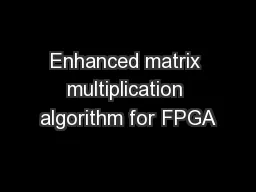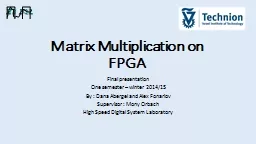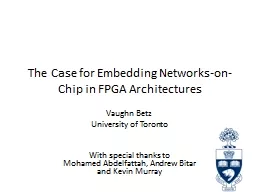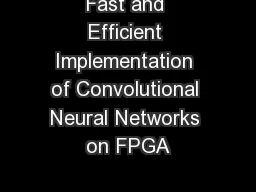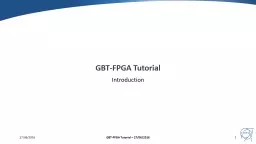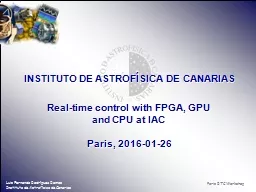PPT-Enhanced matrix multiplication algorithm for FPGA
Author : karlyn-bohler | Published Date : 2017-08-02
Tamás Herendi S Roland Major UDT2012 Introduction The presented work is based on the algorithm by T Herendi for constructing uniformly distributed linear recurring
Presentation Embed Code
Download Presentation
Download Presentation The PPT/PDF document "Enhanced matrix multiplication algorithm..." is the property of its rightful owner. Permission is granted to download and print the materials on this website for personal, non-commercial use only, and to display it on your personal computer provided you do not modify the materials and that you retain all copyright notices contained in the materials. By downloading content from our website, you accept the terms of this agreement.
Enhanced matrix multiplication algorithm for FPGA: Transcript
Download Rules Of Document
"Enhanced matrix multiplication algorithm for FPGA"The content belongs to its owner. You may download and print it for personal use, without modification, and keep all copyright notices. By downloading, you agree to these terms.
Related Documents

